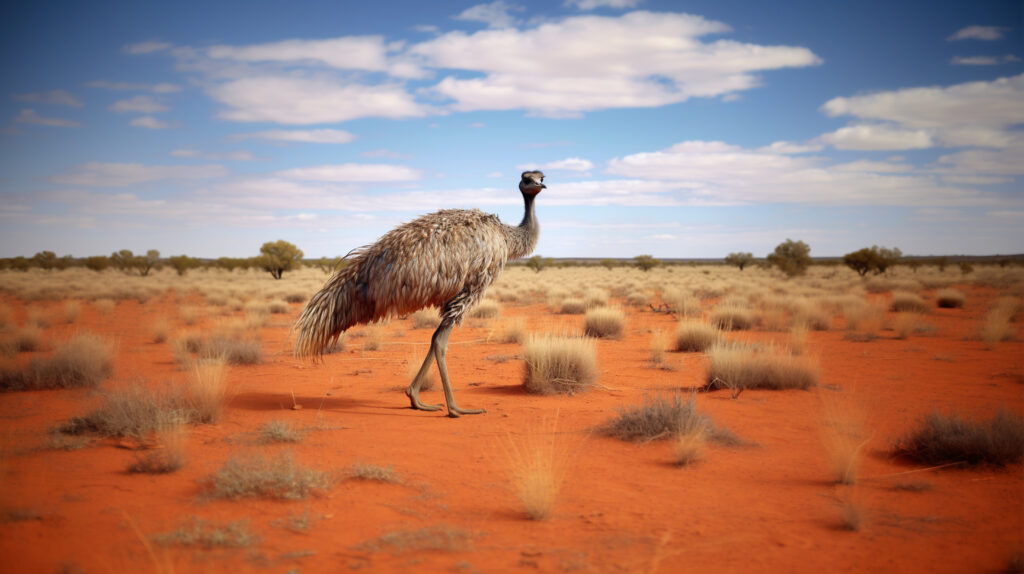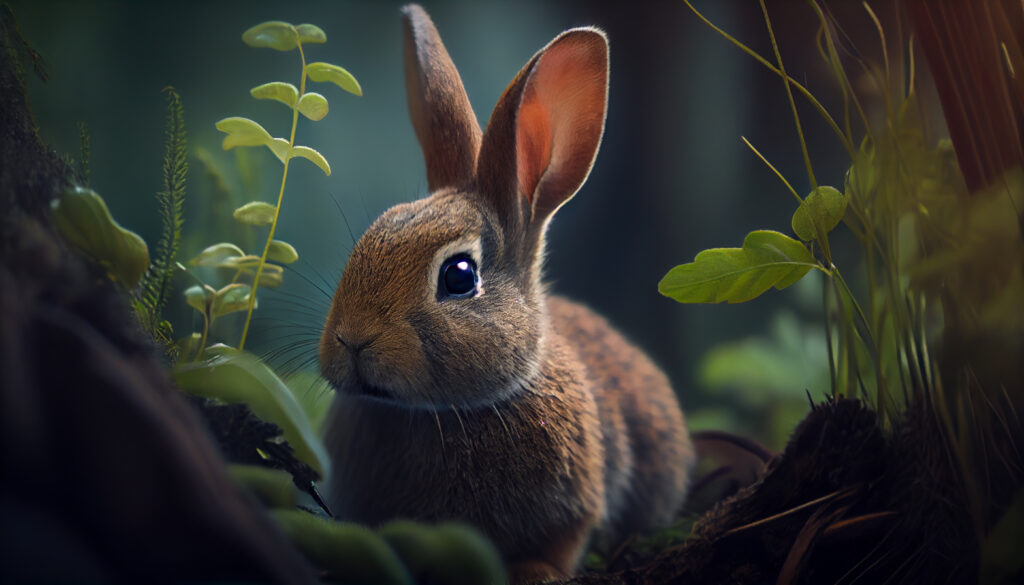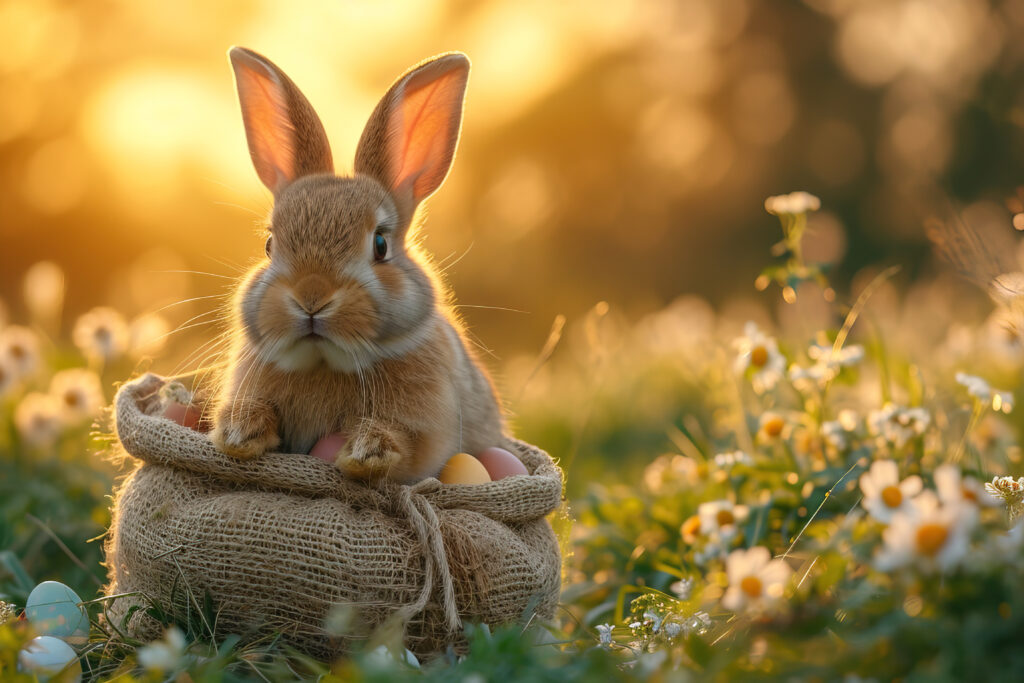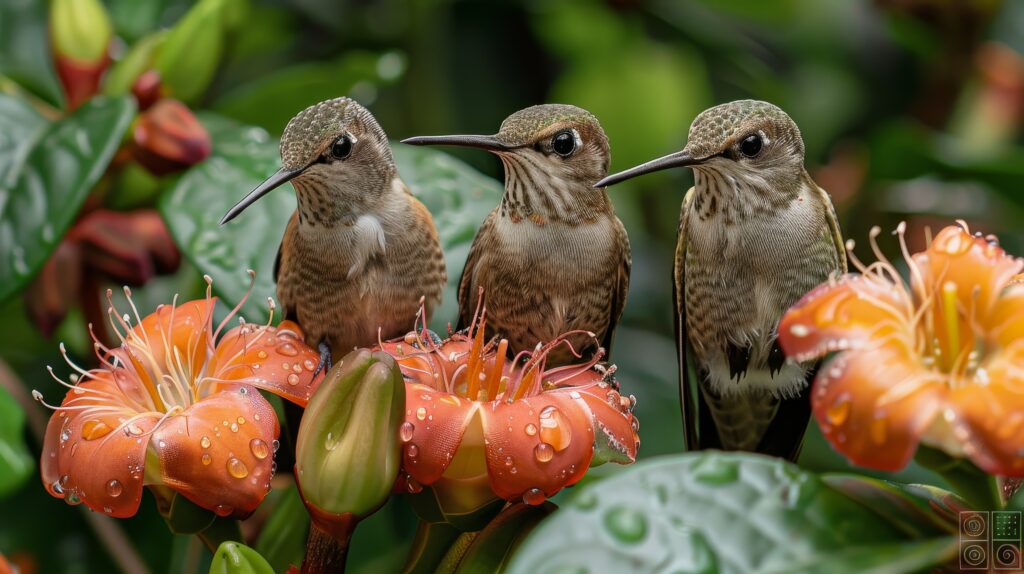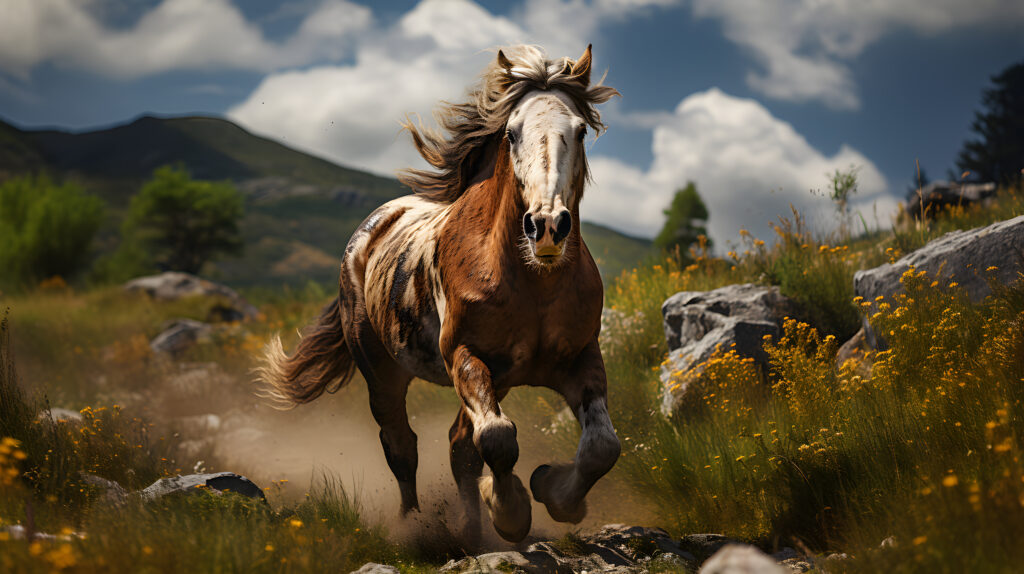Ostrich Behavior In the summer period, ostriches show the greatest difference in their behavior, they are more inactive and sit more in rainy weather than in dry periods. In the breeding season, they become more aggressive. They are violent toward humans, juveniles, even each other and other species.

Outline
- Introduction
- Brief Overview of Ostriches
- Importance of Understanding Ostrich Behavior
- The Natural Habitat of Ostriches
- Geographic Distribution
- Preferred Environment
- Physical Characteristics of Ostriches
- Size and Appearance
- Unique Features
- Diet and Feeding Habits
- Natural Diet
- Foraging Behavior
- Social Structure and Group Dynamics
- Flock Composition
- Hierarchical Behavior
- Reproductive Behavior
- Mating Rituals
- Nesting and Egg Laying
- Parental Care
- Incubation Process
- Rearing of Chicks
- Communication Among Ostriches
- Vocalizations
- Body Language
- Defensive Behaviors
- Predation Risks
- Defense Mechanisms
- Locomotion and Movement
- Walking and Running
- Speed and Agility
- Ostrich Myths and Misconceptions
- Debunking Common Myths
- Real Behavior vs. Myths
- Interaction with Humans
- Domestication and Farming
- Ostriches in Zoos and Sanctuaries
- Conservation Status
- Threats to Ostrich Populations
- Conservation Efforts
- Interesting Facts About Ostriches
- Unique Behaviors
- Fun Trivia
- Conclusion
- Summary of Key Points
- Importance of Continued Study
- FAQs
- How fast can an ostrich run?
- What do ostriches eat in captivity?
- How do ostriches communicate?
- Are ostriches endangered?
- Can ostriches be kept as pets?
Introduction To Ostrich Behavior
Ostriches are fascinating creatures that have captured human imagination for centuries. These flightless birds, native to Africa, are the largest living bird species and boast a range of intriguing behaviors. Understanding ostrich behavior is not only important for those interested in ornithology but also for farmers, conservationists, and anyone curious about animal behavior. Let’s delve into the world of ostriches and uncover the mysteries of their behavior.
The Natural Habitat of Ostriches
Ostriches are primarily found in the savannas and open plains of Africa. They thrive in regions with a mix of grasslands and shrublands, where they can easily forage for food and have a clear view of potential predators. Their habitat preference includes areas with loose soil, which is ideal for nesting.
Physical Characteristics of Ostriches
Standing up to 9 feet tall and weighing as much as 320 pounds, ostriches are imposing birds. They have long necks, large eyes, and strong legs built for running. Their feathers are soft and fluffy, unlike the rigid feathers of flying birds, which help them regulate body temperature. Males are generally darker with black and white plumage, while females are brownish-gray.
Diet and Feeding Habits
Ostriches are omnivores, meaning they consume both plant and animal matter. Their diet includes seeds, shrubs, grasses, fruits, insects, and small vertebrates. Ostriches have a unique foraging behavior; they often use their keen eyesight to spot food from a distance and their strong beaks to peck at the ground. They also consume pebbles and sand to help grind up food in their gizzards, aiding digestion.
Social Structure and Group Dynamics
Ostriches are social birds that often live in groups called flocks. These flocks can range from a few individuals to over 50 birds. Within these groups, a hierarchical structure exists, typically dominated by an alpha male and female. Social interactions include preening, communal nesting, and coordinated movements to detect predators.
Reproductive Behavior
The mating rituals of ostriches are elaborate and fascinating. Males perform a dance that involves dramatic wing flapping and booms to attract females. Once a pair forms a bond, the female lays her eggs in a communal nest. A single nest can contain eggs from multiple females, but the dominant female’s eggs are usually placed in the center to increase their survival chances.
Parental Care
Ostriches exhibit a high level of parental care compared to many other bird species. Both males and females take turns incubating the eggs, using their body heat to keep the eggs warm. Once the chicks hatch, both parents protect and guide them, teaching them how to forage and avoid predators. This shared responsibility increases the chicks’ chances of survival.
Communication Among Ostriches
Ostriches communicate through a combination of vocalizations and body language. They produce a variety of sounds, from deep booming calls used by males during mating displays to hisses and growls when threatened. Body language includes posture changes, feather displays, and specific movements that convey different messages to other ostriches.
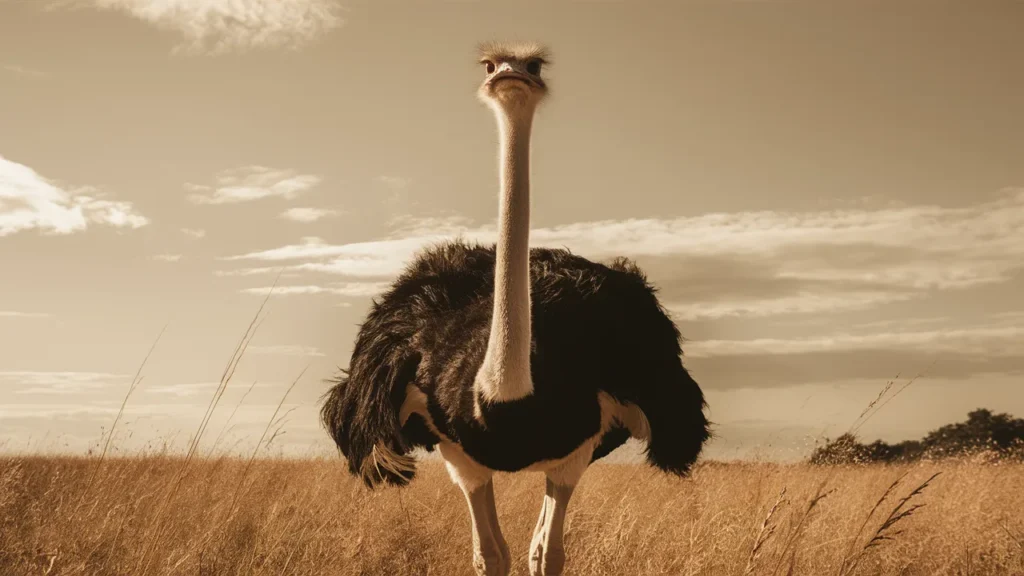
Defensive Behaviors
Living in the wild, ostriches face threats from predators such as lions, cheetahs, and hyenas. Their primary defense mechanism is their incredible speed, capable of running up to 45 miles per hour. They also use powerful kicks to deter predators. Additionally, ostriches rely on their keen eyesight and height to spot danger from afar and alert the flock.
Locomotion and Movement
Ostriches are built for running, with strong legs and a unique tendon structure that provides them with great endurance. Their two-toed feet, with one large toe bearing a claw, give them excellent traction and stability. These adaptations enable them to escape predators swiftly and cover large distances in search of food and water.
Ostrich Myths and Misconceptions
One of the most common myths about ostriches is that they bury their heads in the sand when threatened. In reality, this behavior is a misinterpretation; ostriches often lie down and press their necks to the ground to blend in with their surroundings, which can look like head-burying from a distance. Debunking such myths helps in understanding their true behaviors and adaptations.
Interaction with Humans
Humans have interacted with ostriches for thousands of years, from hunting them for their feathers, meat, and skin to domesticating them for farming. Today, ostrich farming is common, providing valuable resources such as leather, meat, and eggs. Ostriches are also popular in zoos and wildlife sanctuaries, where they serve as ambassadors for their species, helping to educate the public about their behavior and conservation.
Conservation Status
Despite their resilience, ostriches face several threats, including habitat loss, hunting, and climate change. Conservation efforts are crucial to ensure their survival. These efforts include habitat protection, anti-poaching measures, and breeding programs. Organizations around the world work tirelessly to preserve ostrich populations and their natural habitats.
Interesting Facts About Ostriches
Ostriches have several unique behaviors and traits. For example, they have the largest eyes of any land animal, which helps them spot predators from great distances. They also have a unique digestive system that allows them to extract maximum nutrients from their food. Moreover, ostriches can tolerate high temperatures, making them well-adapted to their arid environments.
Conclusion
Understanding ostrich behavior offers valuable insights into the lives of these remarkable birds. From their social structures and reproductive habits to their communication and defense mechanisms, ostriches exhibit a wide range of behaviors that highlight their adaptability and resilience. Continued study and conservation efforts are essential to ensure that these magnificent birds continue to thrive in the wild.

FAQs
How fast can an ostrich run? Ostriches can run at speeds of up to 45 miles per hour, making them the fastest birds on land.
What do ostriches eat in captivity? In captivity, ostriches are typically fed a diet of grains, seeds, vegetables, and commercially prepared ostrich feed to ensure they receive proper nutrition.
How do ostriches communicate? Ostriches communicate through vocalizations such as booming and hissing, as well as body language including feather displays and specific postures.
Are ostriches endangered? Ostriches are not currently endangered, but they face threats from habitat loss and hunting. Conservation efforts are in place to protect their populations.
Can ostriches be kept as pets? Ostriches are not suitable as pets due to their size, strength, and specialized care requirements. They are best kept in farms or wildlife sanctuaries where their needs can be properly met.
